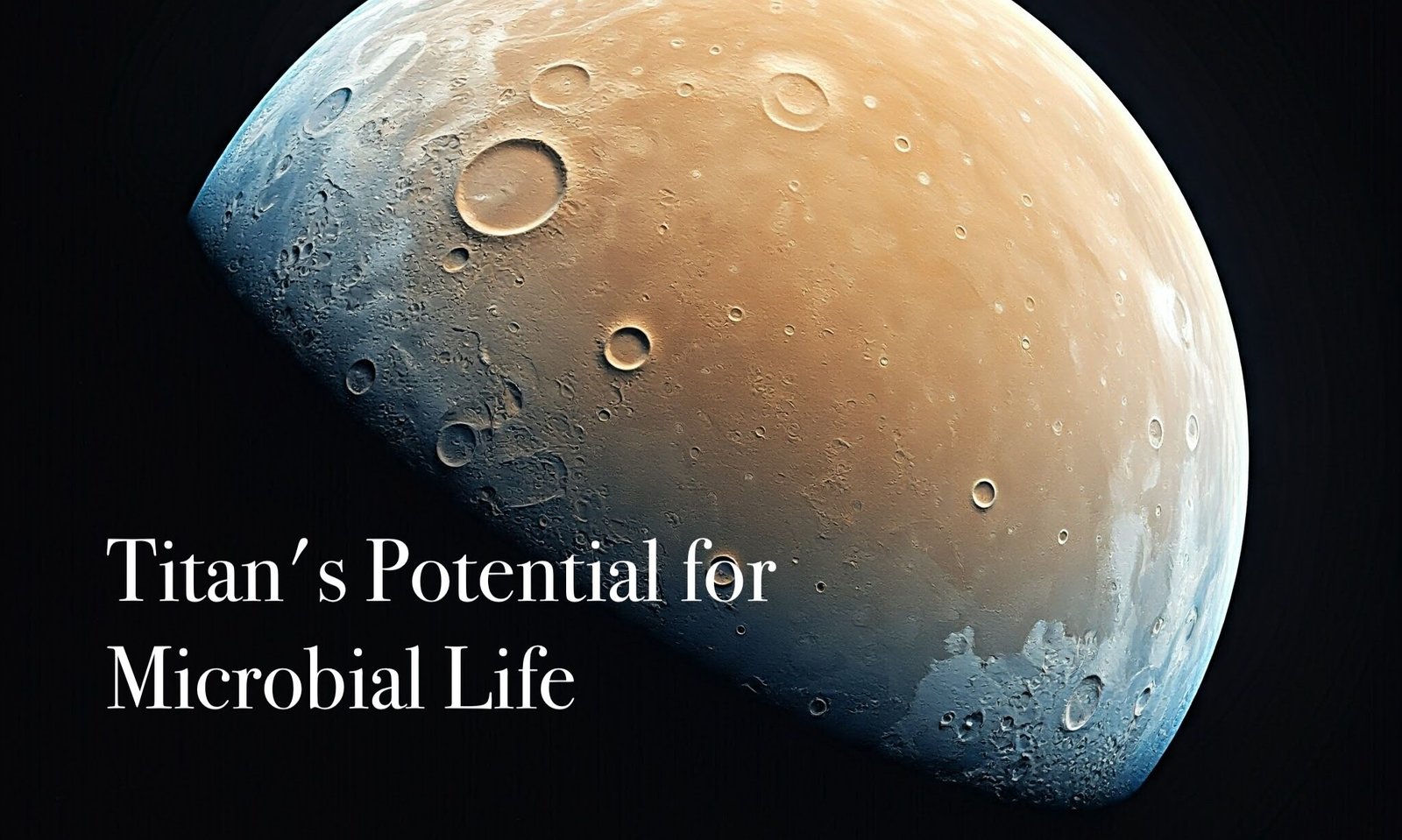As humanity’s search for extraterrestrial life continues, astrobiologists are increasingly turning their attention to the ocean worlds within our solar system. Among these, Saturn’s largest moon, Titan, stands out as a particularly intriguing target. With its thick atmosphere, diverse surface features, and a subsurface ocean, Titan presents a unique environment that could potentially harbor microbial life. Recent research by Maya Danielle Yanez explores the possibility of acetylenotrophy – the microbial fermentation of acetylene – as a viable metabolic pathway on Titan and other ocean worlds.
Titan: An Earth-like Moon with Alien Characteristics
Titan, roughly 40% the size of Earth, boasts an atmosphere 50% thicker than our own. This atmosphere, primarily composed of nitrogen and methane, undergoes complex photochemistry driven by high-energy radiation from Saturn’s magnetosphere. The resulting organic products rain down onto Titan’s surface, creating a rich organic regolith overlying a thick water-ice shell. Beneath this lies a global subsurface ocean, sandwiched between layers of water-ice.
Unlike Earth, Titan’s surface liquids are not water but methane and ethane, forming lakes and seas. This methane cycle, analogous to Earth’s water cycle, shapes Titan’s landscape through fluvial and aeolian processes. The combination of liquid reservoirs, organic chemistry, and potential water-rock interactions in the subsurface ocean makes Titan a compelling target in the search for life beyond Earth.
Acetylenotrophy: A Promising Metabolic Pathway
Acetylene (C₂H₂) is the second most abundant photochemical product in Titan’s atmosphere. On Earth, despite its low atmospheric concentration, acetylene serves as a highly energy-yielding food source for certain bacteria. Acetylenotrophy, the microbial fermentation of acetylene, produces ethanol and acetate:
2C₂H₂ + 3H₂O → CH₃CH₂OH + CH₃COO⁻ + H⁺This process is catalyzed by the acetylene hydratase enzyme, unique in its ability to use acetylene as a substrate. Acetylenotrophs, such as Syntrophotalea acetylenica, can further metabolize the ethanol to produce additional acetate and hydrogen gas.
Acetylenotrophy’s potential role in early Earth’s history makes it an exciting candidate for astrobiology studies. It may have played a crucial part in establishing microbial communities and paving the way for other metabolisms like methanogenesis and sulfate reduction.
Energetics of Acetylenotrophy on Titan
To assess the viability of acetylenotrophy on Titan, Yanez calculated the Gibbs energy of the reaction under conditions modeled after Titan’s subsurface ocean. These calculations considered factors such as temperature, pressure, pH, and estimated concentrations of relevant chemical species.
The results showed that acetylenotrophy could yield between 72-96 kJ/mol C under Titan-like conditions. For comparison, hydrogenotrophic methanogenesis – often considered a potential metabolism on ocean worlds – yields 25-200 kJ/mol C under similar conditions. At the most likely ocean conditions for Titan, acetylenotrophy yields 78 kJ/mol C, comparable to methanogenesis at 88 kJ/mol C.
Importantly, acetylenotrophy remains energetically favorable even at very low acetylene concentrations. This suggests that the metabolism could be viable in a variety of microenvironments within Titan’s subsurface ocean.
Laboratory Culturing and Implications for Astrobiology
To further investigate the potential for acetylenotrophy on Titan, Yanez conducted laboratory experiments culturing Syntrophotalea acetylenica, the type strain of acetylenotrophs. These experiments aimed to determine growth rates under various conditions and measure acetylene consumption.
The results from these cultures were used to estimate potential cell densities in Titan-like environments. Such estimates are crucial for determining detection limits for future astrobiology-focused missions. By understanding the energy requirements and growth patterns of acetylenotrophs under various conditions, scientists can better design instruments and experiments for detecting potential microbial life on Titan.
Comparison with Other Ocean Worlds
While the study focused primarily on Titan, Yanez also considered the potential for acetylenotrophy on Enceladus, another of Saturn’s moons with a subsurface ocean. Enceladus is particularly interesting due to its plumes of water ice ejected from its south pole, which have been sampled by the Cassini mission.
Calculations showed that acetylenotrophy could yield 72-84 kJ/mol C in an Enceladus-like ocean, with 82 kJ/mol C at the most likely conditions. This compares favorably with methanogenesis, which yields 112 kJ/mol C under the same conditions.
Implications for Future Missions
The research by Yanez has important implications for future missions to Titan and other ocean worlds. NASA’s Dragonfly mission, set to launch in 2026 and arrive at Titan in 2034, will be the first to explore Titan’s surface in detail since the Huygens probe in 2005. Understanding the potential for acetylenotrophy can help guide the design of experiments and instruments for this mission.
Moreover, this work highlights the importance of considering a wide range of potential metabolisms when searching for life beyond Earth. While much attention has been given to methanogenesis, acetylenotrophy represents another viable pathway that could support microbial life in the unique environments of ocean worlds.
The research by Maya Danielle Yanez provides a compelling case for considering acetylenotrophy as a potential metabolism for microbial life on Titan and other ocean worlds. By combining thermodynamic calculations, laboratory experiments, and extrapolations to Titan-like conditions, this work offers valuable insights into the potential habitability of these alien environments.
As we continue to explore the solar system and search for signs of life beyond Earth, studies like this remind us of the importance of keeping an open mind about the diverse forms that extraterrestrial life might take. The possibility of Acetylenotrophs thriving in the subsurface oceans of distant moons expands our understanding of life’s potential and guides our search for bio-signatures in these fascinating worlds.
Here are some suggested readings related to the habitability of Titan, acetylenotrophy, and astrobiology:
NASA Solar System Exploration: Titan
https://solarsystem.nasa.gov/moons/saturn-moons/titan/in-depth/
This NASA page provides comprehensive information about Titan’s characteristics and environment.
Astrobiology at NASA: Ocean Worlds
https://astrobiology.nasa.gov/research/astrobiology-at-nasa/ocean-worlds/
NASA: Dragonfly
https://www.nasa.gov/dragonfly
Cassini Mission Page
https://solarsystem.nasa.gov/missions/cassini/mission/spacecraft/cassini-orbiter/
Astrobiology Strategy 2015
https://nap.nationalacademies.org/catalog/26522/origins-worlds-and-life-a-decadal-strategy-for-planetary-science




